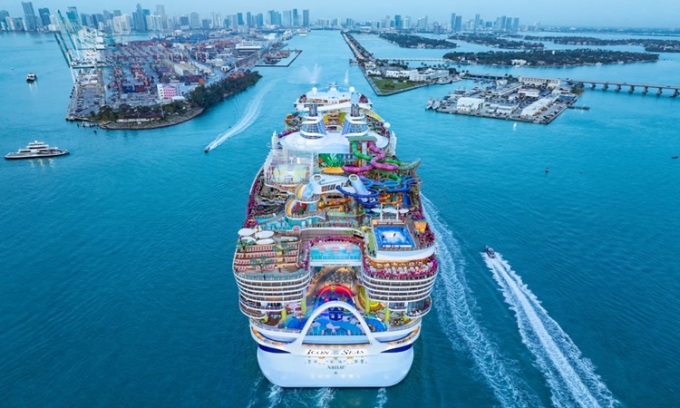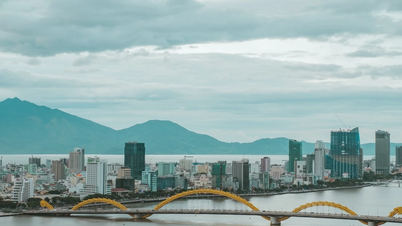The Icon of the Seas cruise ship powered by liquefied natural gas (LNG) departed Miami on January 27 on its first commercial voyage.

Icon of the Seas runs on liquefied natural gas. Photo: Guardian
The world's largest cruise ship began its first commercial voyage from Miami on January 27. Longer than the Eiffel Tower (365 m) tall, Royal Caribbean's Icon of the Seas has 20 decks and can accommodate more than 7,000 passengers and crew. Weighing 250,000 tonnes, it is also five times larger than the Titanic, according to the Guardian . The ship has colorful slides on the upper deck of "Thrill Island", the world's largest water park at sea, and a 17-metre indoor waterfall.
But the giant ship's Florida sailing has focused attention on the planetary impact of cruise tourism . Studies by environmental groups have shown that a week's worth of carbon emissions from a cruise around Europe is eight times greater than flying and staying in a hotel. Royal Caribbean has highlighted that the Icon of the Seas runs on liquefied natural gas (LNG), calling it "the cleanest marine fuel." But Bryan Comer, director of the International Council on Clean Transportation's maritime program, said the use of such fuel shows the cruise industry is "investing in the wrong climate solution."
“They are recklessly calling LNG a green fuel when the engines emit 70-80% more greenhouse gases per trip than conventional marine fuel. Icon has the largest LNG tank installed on a ship. It is green marketing,” Comer said.
Using LNG instead of other marine fuels reduces carbon dioxide emissions by a quarter. But LNG-powered cruise ships also emit a larger amount of the greenhouse gas methane, which is more potent at causing climate change than carbon dioxide. Methane traps 80 times more heat than CO2 for 20 years after being released into the atmosphere.
Ships should use fuel cells and renewable hydrogen or methanol to emit fewer greenhouse gases, Comer said. When Icon was designed more than seven years ago, LNG was “the most promising fuel available at scale,” said Nick Rose, vice president of Royal Caribbean. “We see it as a transition fuel that will allow us to add flexibility to our ship designs and make it easier to adapt to a variety of fuels as the market changes.”
The Icon can accommodate fuel cells that provide zero-emissions electricity, but the batteries have not been installed due to issues with suppliers. Rose said the company is committed to exploring and implementing alternative energy sources, including fuel cells. The giant ship is also built to run on land-based electricity when in port, a cleaner option.
Venice, Barcelona and Amsterdam are among the port cities that have banned or reduced the number of cruise ships due to environmental and health concerns. Larger ships require more port infrastructure to avoid damaging coral reefs and ecosystems, said Marcie Keever, a member of Friends of the Earth in the US.
An Khang (According to Guardian )
Source link

























































































![[OCOP REVIEW] Tu Duyen Syrup - The essence of herbs from the mountains and forests of Nhu Thanh](https://vphoto.vietnam.vn/thumb/402x226/vietnam/resource/IMAGE/2025/6/5/58ca32fce4ec44039e444fbfae7e75ec)







Comment (0)